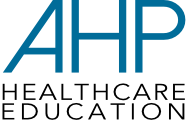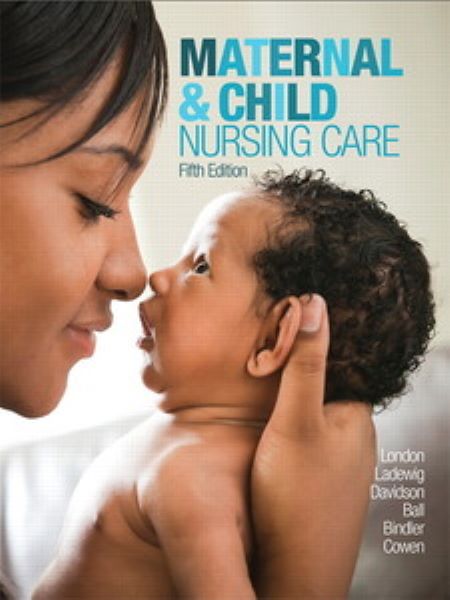Maternal & Child Nursing Care
$135.99
Personalize learning with MyNursingLab®
MyNursingLab is an an online homework, tutorial, and assessment program designed to engage students in the Maternal/Newborn Nursing course and improve results. Its guided learning path is proven to help students think like a nurse as they move beyond memorization to true understanding through application.
- Improve students’ clinical reasoning. Clinical Decision-Making Cases ask students to identify clinically-salient patient information and make informed decisions at key moments in patient care scenarios. The Clinical Decision-Making Cases help students practice “thinking like a nurse” as they analyzed information and make sound decisions to provide safe and effective patient care.
- Prepare students for the NCLEX-RN Exam. More NCLEX-style study questions and two new 60-question Practice Tests are included in MyNursingLab.
Prepare students to participate in the health of childbearing and childrearing families
- UpdatedHealthy People 2020 goals acquaint students with national public health efforts and help them make connections between care of individual families and broad-based community health care and public policy. The coding in front of each objective identifies the book chapter and the Healthy People 2020 initiative number.
- Current nutritional information helps nurses ensure appropriate nutrition during pregnancy, the newborn period, infancy, and childhood.
- Current research on pain and pain management is referenced throughout the text, with extensive coverage included on birth, postpartum families, and pharmacological options.
- A new chapter, Pregnancy in Selected Populations, provides expanded content on nursing care for pregnant women from potentially vulnerable populations, such as adolescents, women over 35 years of age, and those with physical or intellectual disabilities.
- A new chapter, Genetic and Genomic Influences in Maternal, Newborn, and Child Health, reflects an emerging understanding of genome science, its impact on health and illness in children and childbearing families, and the expanding role that nurses play in applying genetics in clinical practice.
- Expanded discussions of end-of-life care include the care of the family and the child who is dying, grief and loss associated with miscarriage, and care of the family experiencing perinatal loss.
Focus student reading and review for rapid learning
- Also available: Pearson’s Maternity and Pediatric Nursing Reference App provides a collection of handy tools and additional content for students and professionals looking for a quick reference in maternity or pediatrics nursing.
Clarify concepts with visuals that teach
- A new 2-page, 16-photograph Birth Sequence in Chapter 18 provides a moment-by-moment visual presentation of the birth of a baby.
Develop clinical-reasoning skills, and prepare students for clinical settings
- Updated Professionalism in Practice features focus on topics such as legal and ethical considerations, contemporary nursing practice issues, professional accountability, practice guidelines, patient advocacy, and home and community care considerations.
- Updated SAFETY ALERT! features present essential information that calls attention to issues that could place a patient or a nurse at risk and provide guidance on maintaining a safe environment.
In stock
Designed to support faster, more efficient learning, Maternal & Child Nursing Care presents key content about maternal-newborn nursing, women’s health, and pediatric nursing topics in an accurate, readable way. Throughout this family-focused text, special attention is paid to health promotion, home/community care, patient and family education, clinical reasoning, evidence-based practice, and cultural competence. Engaging features help readers learn and retain essential concepts in a short period of time. The straightforward approach allows readers to focus on what is most important–developing the essential skills and abilities to practice nursing in fast-changing healthcare environments.
KEY TOPICS: Contemporary Maternal, Newborn, and Child Health Nursing; Culture and the Family; Genetic and Genomic Influences in Maternal, Newborn, and Child Health; Reproductive Anatomy and Physiology; Health Promotion for Women; Common Gynecologic Problems; Conception and Fetal Development; Physical and Psychological Changes of Pregnancy; Antepartum Nursing Assessment; The Expectant Family: Needs and Care; Maternal Nutrition; Pregnancy in Selected Populations; Assessment of Fetal Well-Being; Pregnancy at Risk: Pregestational Problems; Pregnancy at Risk: Gestational Onset; Processes and Stages of Labor and Birth; Intrapartum Nursing Assessment; The Family in Childbirth: Needs and Care; Pharmacologic Pain Management; Childbirth at Risk: Pre-Labor Complications; Childbirth at Risk: Labor-Related Complications; Birth-Related Procedures; The Physiologic Responses of the Newborn to Birth; Nursing Assessment of the Newborn; The Normal Newborn: Needs, Care, and Feeding; The Newborn at Risk: Conditions Present at Birth; The Newborn at Risk: Birth-Related Stressors; Postpartum Adaptation and Nursing Assessment; The Postpartum Family: Early Care Needs and Home Care; The Postpartum Family at Risk; Growth and Development; Infant, Child, and Adolescent Nutrition; Pediatric Assessment; Health Promotion and Maintenance: General Concepts, the Newborn, and the Infant; Health Promotion and Maintenance: The Toddler, the Preschooler, and the School-Age Child; Health Promotion and Maintenance: The Adolescent; Family Assessment and Concepts of Nursing Care in the Community; Nursing Considerations for the Child and Family with a Chronic Condition; Nursing Considerations for the Hospitalized Child; Pain Assessment and Management in Children; The Child with a Life-Threatening Condition and End-of-Life Care; Social and Environmental Influences on the Child; Immunizations and Communicable Diseases; The Child with Alterations in Fluid, Electrolyte, and Acid-Base Balance; The Child with Alterations in Eye, Ear, Nose, and Throat Function; The Child with Alterations in Respiratory Function; The Child with Alterations in Cardiovascular Function; The Child with Alterations in Immune Function; The Child with Alterations in Hematologic Function; The Child with Cancer; The Child with Alterations in Gastrointestinal Function; The Child with Alterations in Genitourinary Function; The Child with Alterations in Endocrine Function; The Child with Alterations in Neurological Function; The Child with Alterations in Mental Health and Cognitive Function; The Child with Alterations in Musculoskeletal Function; The Child with Alterations in Skin Integrity


